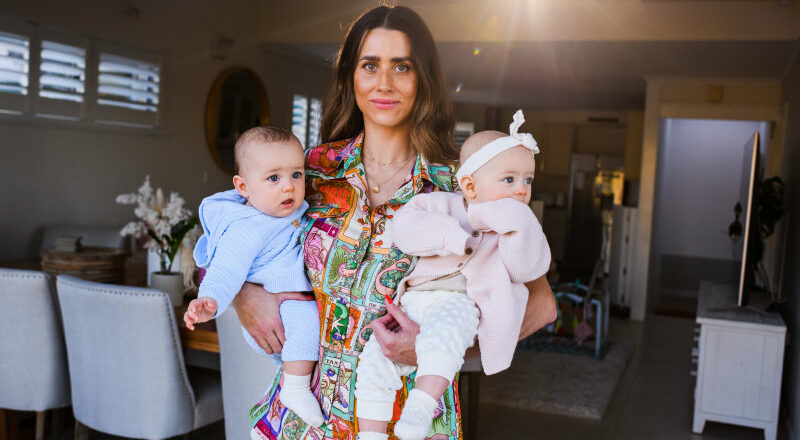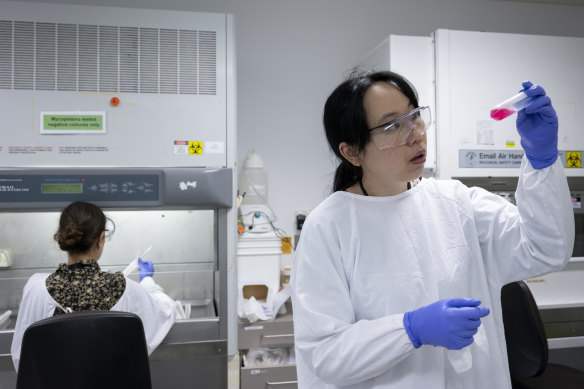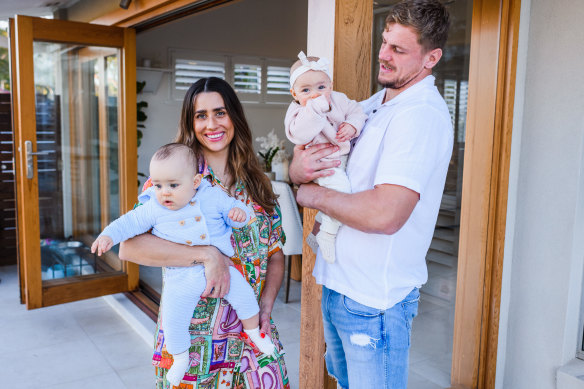Endometriosis affects one in nine women. World-first research at a Sydney hospital is giving them hope
Save articles for later
Add articles to your saved list and come back to them any time.
Key points
- Researchers at Sydney’s Royal Hospital for Women have successfully grown tissue from all known types of endometriosis in a laboratory.
- The cells will be used to test new and existing drugs, and more accurately diagnose patients.
- Endometriosis Australia estimates the illness costs Australia $9.7 billion per year in direct health costs and lost productivity.
A team of Sydney researchers has become the first in the world to successfully grow tissue from all known types of endometriosis, paving the way for new research into effective treatments and more targeted diagnoses for the debilitating condition.
The disease, which occurs when tissue similar to the lining of the uterus grows outside the organ, affects one in nine women, but symptoms can vary dramatically between patients.
Dr Dongli Liu examines tissue grown from live endometriosis cells at the Lowy Cancer Research Centre, Sydney.Credit: Janie Barrett
Researchers at Sydney’s Royal Hospital for Women will now be able to test drugs and match patient’s symptoms with specific proteins, after successfully growing 30 different lab-grown tissues taken during surgery.
The hospital’s professor of obstetrics and gynaecology Jason Abbott said collecting the cells in one place for the first time would allow researchers to accurately diagnose patients, potentially limiting the need for invasive and painful surgeries.
“Very much like we thought breast cancer, 30 years ago, was one disease and treated in one way, we now understand that [endometriosis] is much more complex than that,” he said. “All those different types of endometriosis really probably reflect different diseases … and that [can determine] their response to treatment, clinical symptoms and also things like infertility.”
He said the development would help fast-track new treatments by enabling researchers to test new and existing drugs on the lab tissues, rather than in humans.
“It’ll mean that we’ll be offering new treatments just around the corner,” he said.
Designer Kate Ford with her partner, Ryan Sutton and twins Ryder and Dakota. Credit: James Brickwood
Fashion designer Kate Ford has battled endometriosis since her first period, undergoing multiple invasive surgeries and trialling a plethora of birth control medications to curb the disease.
Drastic surgery to remove large sections of endometriosis on the right side of her stomach gave Ford and her partner, Canterbury Bulldogs NRL player Ryan Sutton, a small window in which to fall pregnant.
“I don’t know how we did it, but we got twins,” she said. “It’s a miracle at the end of the day.”
Ford said that she hopes the new research will help grow awareness of the disease among doctors and the public – particularly young women who are told that pain is a normal part of getting your period.
“It’s not normal, and I think you shouldn’t have to get to the point of not being able to fall pregnant to realise that something’s up.”
The development of new treatments through the groundbreaking research could mean less disruption to women’s working lives, said women’s health expert professor Susan Davis, of Monash University.
A new study she co-authored has found those with endometriosis are twice as likely to need 10 sick days or more a year and twice as likely to say it affected the quality of their work.
The study, “The impact of endometriosis on the work ability of young Australian women”, published in The Australian and New Zealand Journal of Obstetrics and Gynaecology, examined the link between ever having been diagnosed with endometriosis, and sick leave among nearly 7000 women.
The representative study found the highest prevalence of endometriosis was among women aged 35-39, and having the disease was “associated with a greater likelihood of poor to moderate work ability”.
“We showed it was not just women with severe disease who are affected,” said Davis. “There’s a huge spectrum of this condition; not everybody is debilitated, but other people spend their life in and out of hospital.”
“Across the board, if you’ve been diagnosed with it in your twenties and had a problem, you’re still likely to have some issues later in life.”
Endometriosis Australia estimates the illness costs Australia $9.7 billion per year; $2.5 billion coming in direct healthcare costs, and the rest in lost productivity.
Davis said her study’s findings reinforced the importance of early endometriosis diagnosis and targeted therapies, and the NSW research was “a breakthrough that could help people towards treatment”.
The Morning Edition newsletter is our guide to the day’s most important and interesting stories, analysis and insights. Sign up here.
Most Viewed in National
From our partners
Source: Read Full Article



